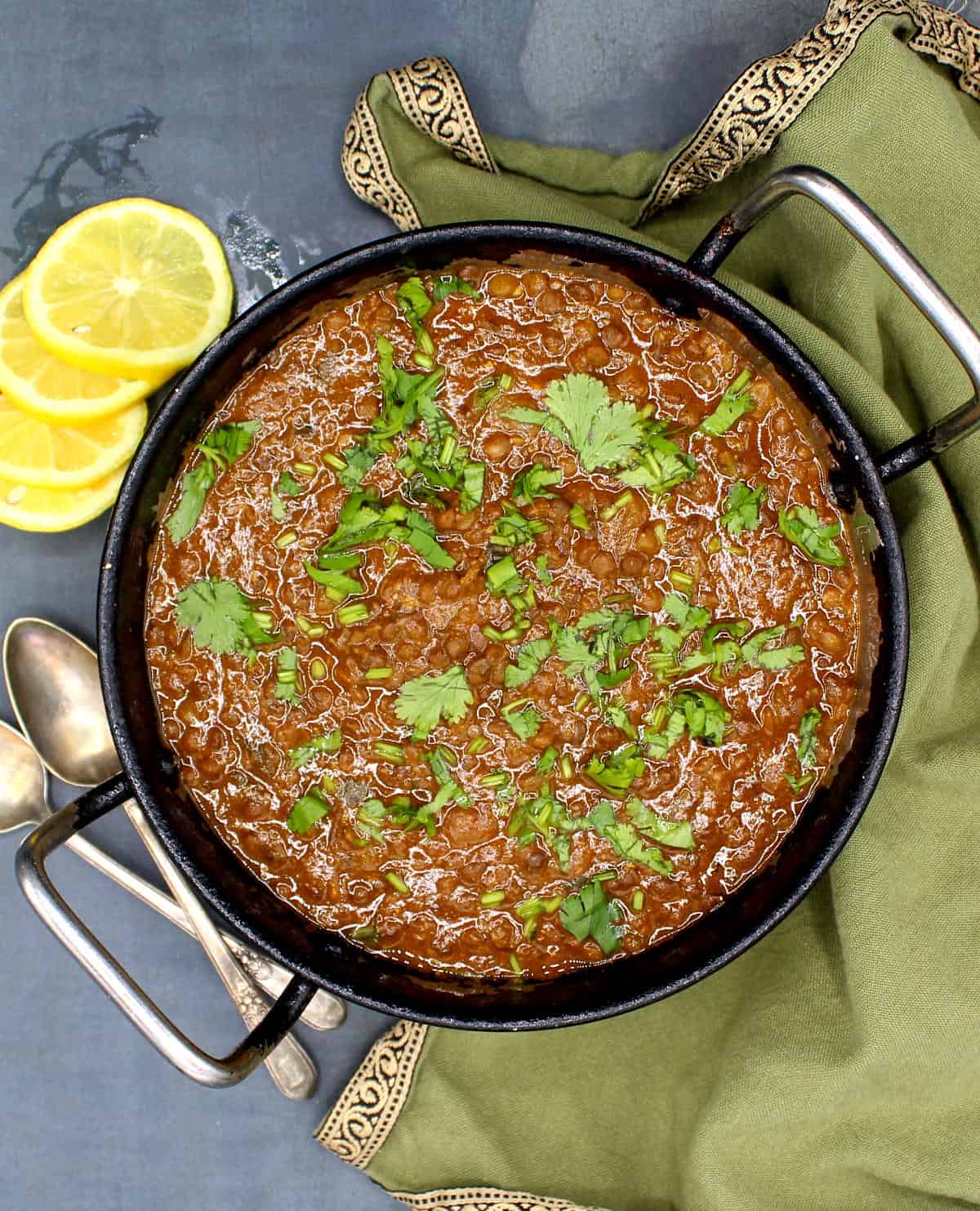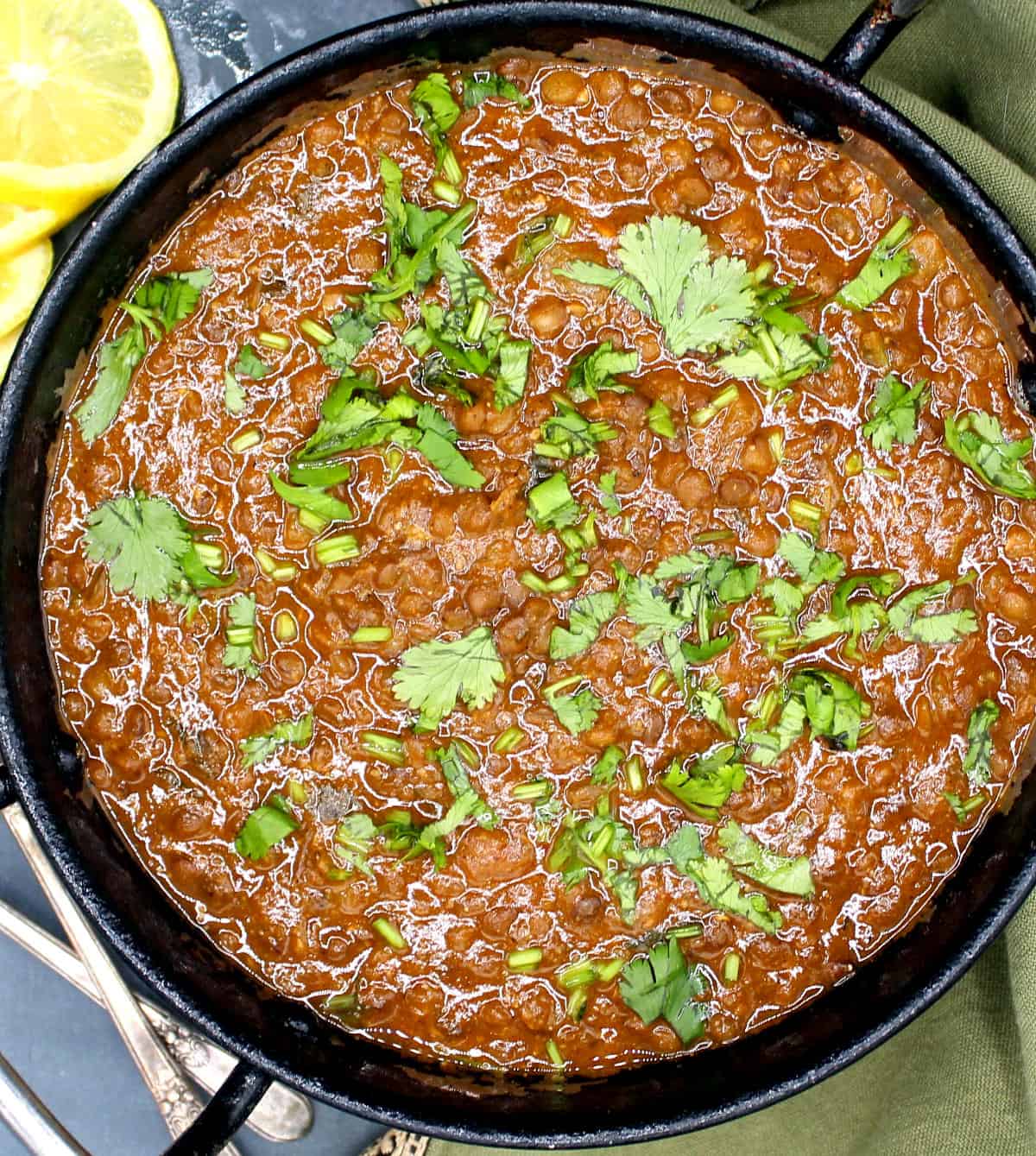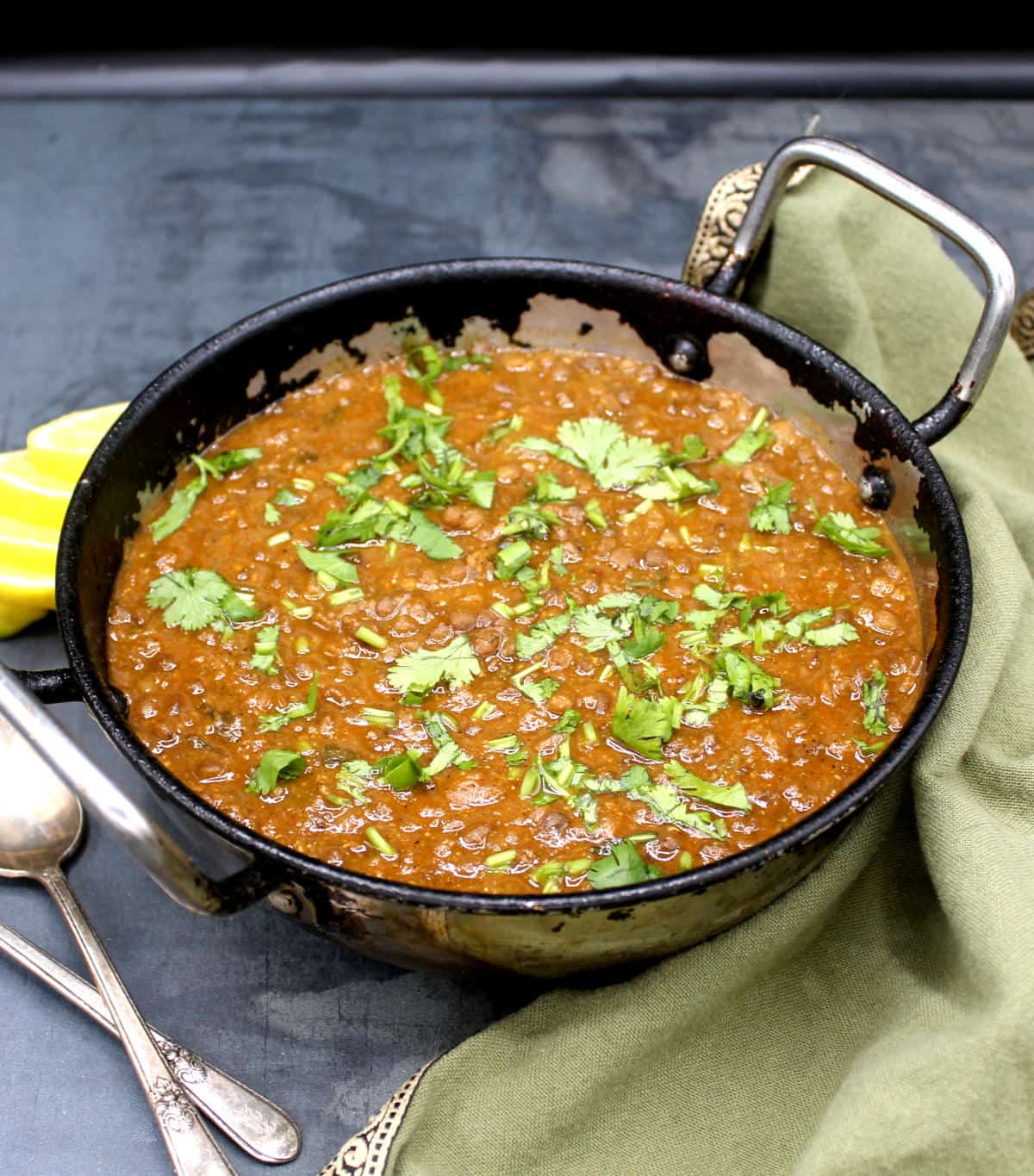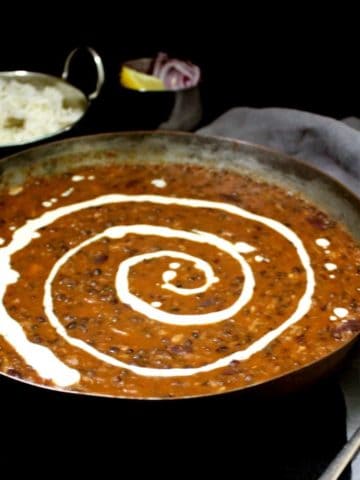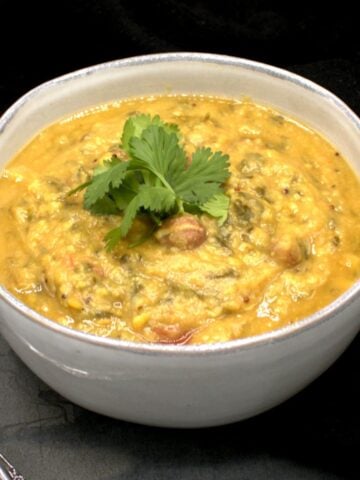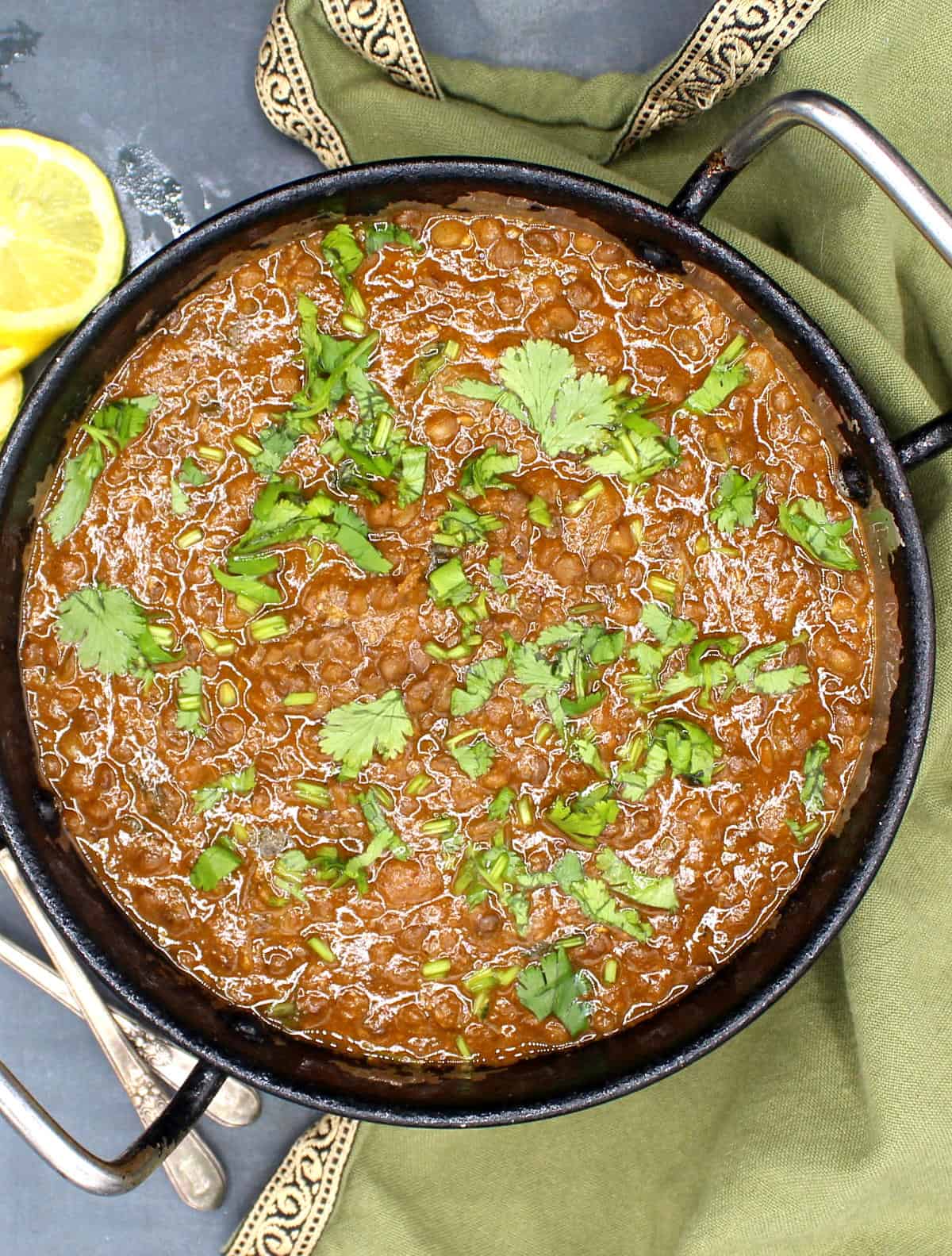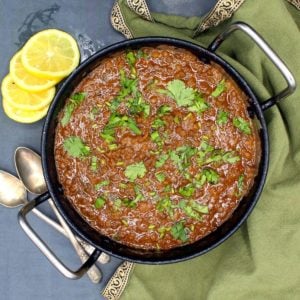You might also like these recipes for spicy urad dal, moong dal and yellow dal. A dal is the anchor of nearly every Indian meal, providing valuable protein and other essential nutrients to a mostly vegetarian palate. That’s why there are so many dal recipes across India’s many regional cuisines, like Bengali cholar dal, Punjabi dhaba dal, Tamilian sambar and Maharashtrian dalitoy. This easy whole masoor dal is one I also make often. It is one of my favorite dal recipes because it is absolutely delicious and so easy to make.
How to make whole masoor dal
Cook the whole masoor on the stovetop or in a pressure cooker or Instant Pot until tender (see more on how to do this below). Heat 1 teaspoon oil in a large saucepan. Add the cumin seeds and, when they darken, half the onions and the cloves of garlic and saute until they turn golden-brown. Add the coriander seeds, poppy seeds, sesame seeds and the dry red chili pepper, if using. Saute until these ingredients are lightly colored and very fragrant. Then remove them to a bowl and set aside to cool. Once the ingredients have cooled, add them to a blender along with the tomatoes. Blend into a very smooth paste. Add a bit of water if needed to keep the blades moving, although it should not be necessary. Heat the remaining oil in the same pan and add the remaining onions. Add a pinch of salt and saute the onions until they are golden-brown. Stir in the ginger garlic paste and saute for a minute. Add the blended masala and the cooked masoor to the pot along with a cup of the lentil cooking stock, if any, turmeric, paprika, if using, and the sugar. Mix well and let the lentils cook for 10-15 minutes, stirring occasionally, until you see pools of darker liquid float to the top, which tells you everything is cooked as it should be. You can add more liquid to the pot at any time for a runnier dal. Sprinkle on the garam masala, stir well, and add more salt as needed. Turn off the heat and garnish with the chopped coriander leaves or cilantro. Serve with wedges of lemon so eaters can squeeze some lemon juice on the dal and rice right before they eat. This also helps tamp down the heat for anyone sensitive to it.
Serve
Whole masoor dal goes nicely with basmati rice or brown rice. You can also serve it with jeera rice or carrot rice. Or serve the dal with a fluffy vegan naan. Serve sabzi or cooked Indian vegetable side with the dal and rice, like jeera aloo or aloo gobi.
Store
Refrigerate: Leftover masoor dal will keep in the fridge for up to three days. Freeze: To store the dal for longer place in an airtight container and freeze up to three months. Reheat: Heat frozen dal in a saucepan or in the microwave. If heating the dal in a saucepan add a little bit of water to the saucepan to buffer the frozen dal as it thaws. Stir frequently and let it boil, then turn off heat. If you add more water to the dal check if more salt is needed.
More Indian dal recipes
Recipe card
Pressure cooker: Wash the dal in a few changes of water, then place it in the pressure cooker (or the stacked container inside a pressure cooker), with three cups water for each cup of lentils, or enough water to cover the lentils by two inches. In a pressure cooker that “whistles,” cook the lentils for three whistles. In those that just reach pressure and release steam at a steady rate, give about six minutes after the cooker reaches pressure, or follow manufacturer instructions. Let the steam release naturally. Some manufacturers here in the west do warn against cooking lentils in pressure cookers, so make sure you have a model that works with lentils. Instant Pot: Cover the unsoaked lentils by an inch of water and set to high pressure for 10 minutes. Wait for the pressure to release naturally, but if you’re in a rush you can force-release after 10 minutes. Stovetop: Place the washed lentils in a saucepan, cover with two inches of water, and bring it all to a boil. Cover the pot and let the lentils simmer for about 20-30 minutes or until tender. Always ensure there is at least an inch of water covering the lentils and add more if needed. Check to get new recipe updates by email.
